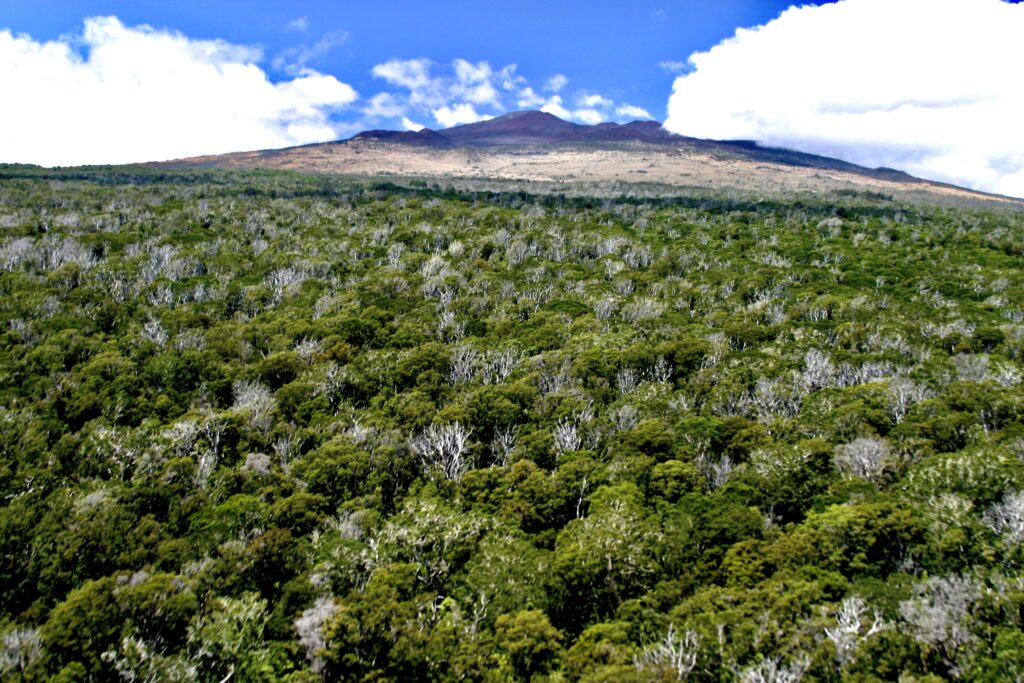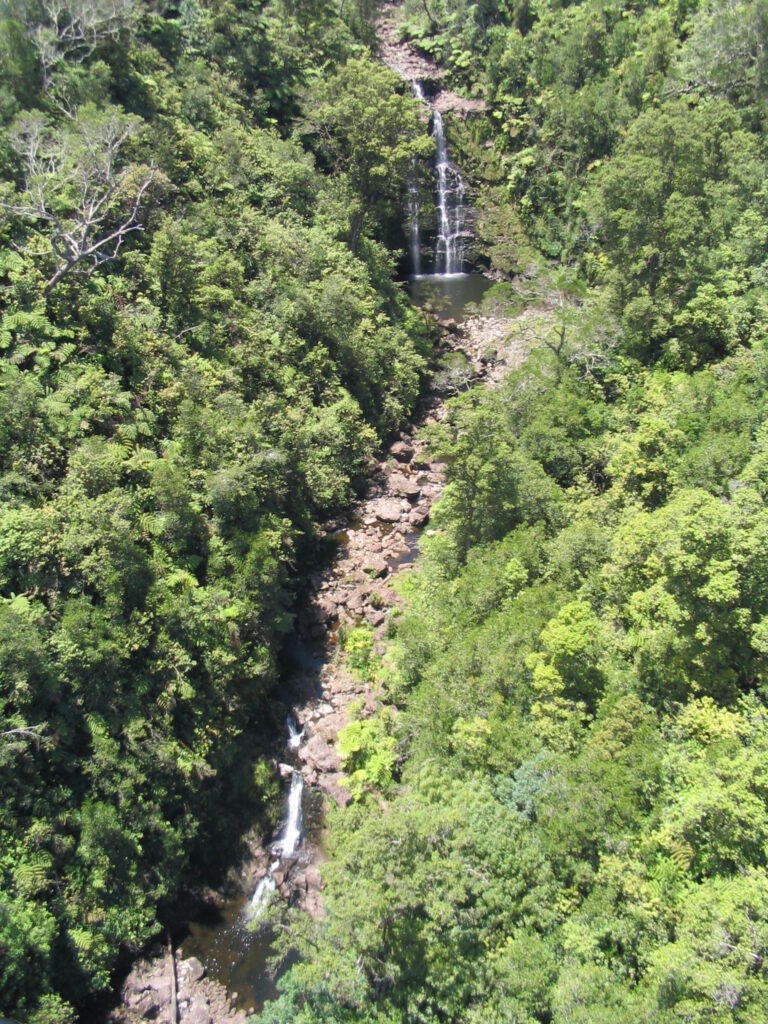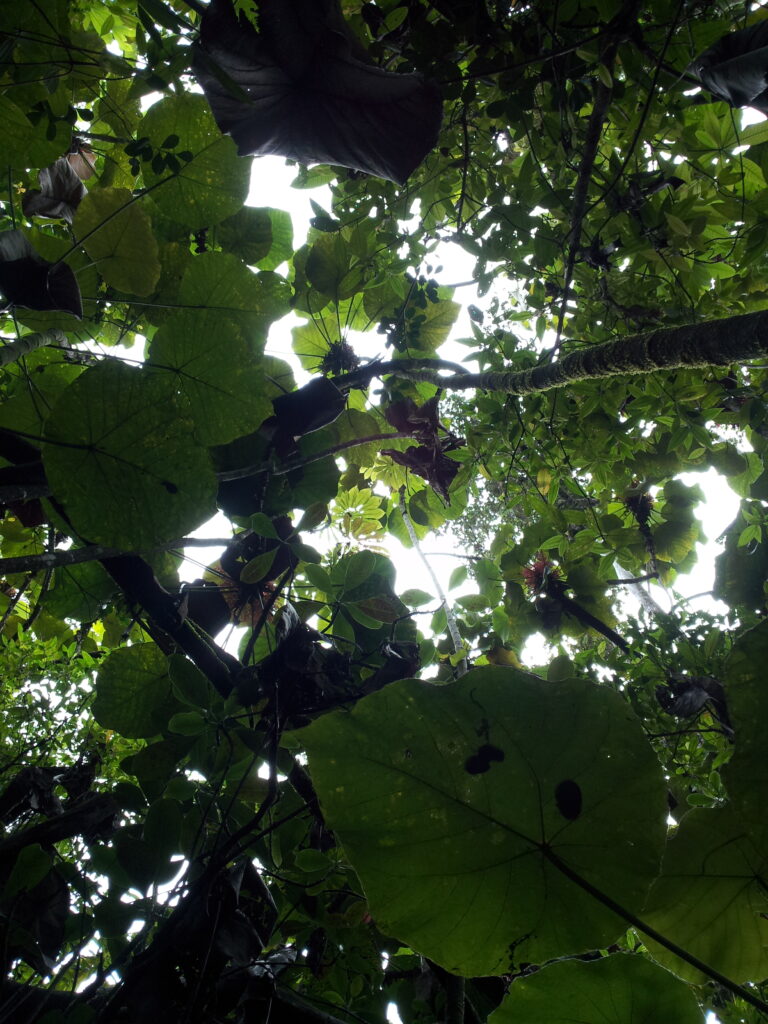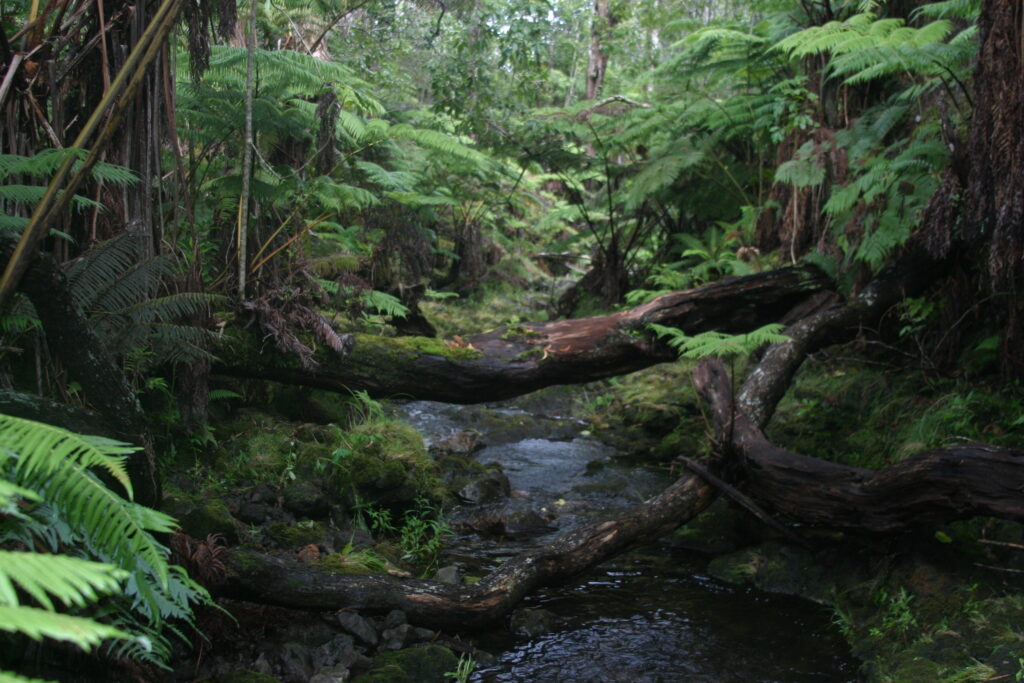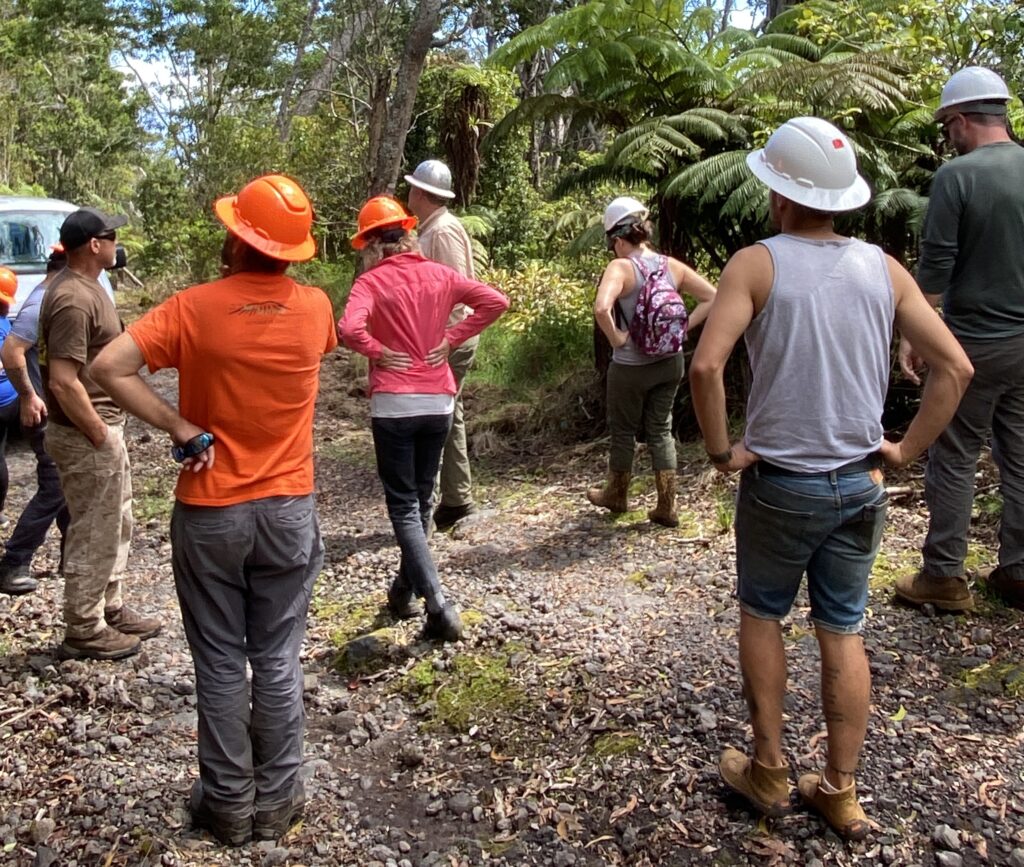Wet Forest
The Laupāhoehoe Unit contains native-dominated forested landscapes from lowland forest at 2,300 feet (700 m) above sea level extending through four Holdridge Life Zones to almost 6,200 feet (1,890 m) in elevation. Average annual rainfall of the Unit ranges from 135 inches (3,428 mm) at lower elevations to 69 inches (1,752 mm) at higher elevations. It is part of the largest remaining native dominated forest in Hawai‘i. Forests are largely dominated by ‘ōhi‘a (Metrosideros polymorpha) and koa (Acacia koa), the two most widespread tree species in native forest remaining in Hawai‘i. In addition, the landscape includes plantations dominated by tropical ash (Fraxinus uhdei) and eucalyptus (Eucalyptus spp.), degraded pastures, abandoned sugarcane fields, and sites dominated by invasive plants and animals. Invasive flora include strawberry guava, clidemia, melastomes, vines, and grasses, while invasive fauna include pigs, rats, various birds (terrestrial) and fish, shrimp, and caddisflies (aquatic). Seven headwater streams originate in the experimental forest provide excellent opportunities to conduct hydrologic and aquatic ecology studies. Streams in the site include two first order tributaries of Ka‘awali‘i Stream, Laupāhoehoe Stream, Kilau Stream, Kiwilahiahi Stream, Ha‘akoa Stream, and Pahale Stream. Three distinct and continuous soil substrates of differing ages occur along broad elevational ranges.
The Laupāhoehoe Experimental Forest Unit is located on the windward side of the island of Hawai‘i on the slopes of the Mauna Kea volcano. The 12,300 acre (5,000 ha) site contains magnificent examples of primary wet and rain forest and is the habitat to numerous endangered plant and animal species. A total of 234 vascular plants (native and non-native) have been identified. Among them, 12 are considered rare (known from fewer than 20 locations worldwide or less than 3,000 individuals). Twenty-two bird species (native and non-native) have been observed, including four Federally-listed endangered bird species.
Elevations below this site are privately owned and adjacent lands at upper elevations are administered by Department of Hawaiian Homelands and the Division of Forestry and Wildlife. Locating an experimental forest within this framework provides researchers with a globally unique opportunity to study environmental gradients from the upper limits of agriculture at lower elevations through 8 Holdridge life zones terminating at the alpine life zone at almost 13,996 feet (4,267 m) in elevation.
Biological and Cultural Assessments
The Laupāhoehoe Science and Education Center is located on USFS lands in Laupāhoehoe.

